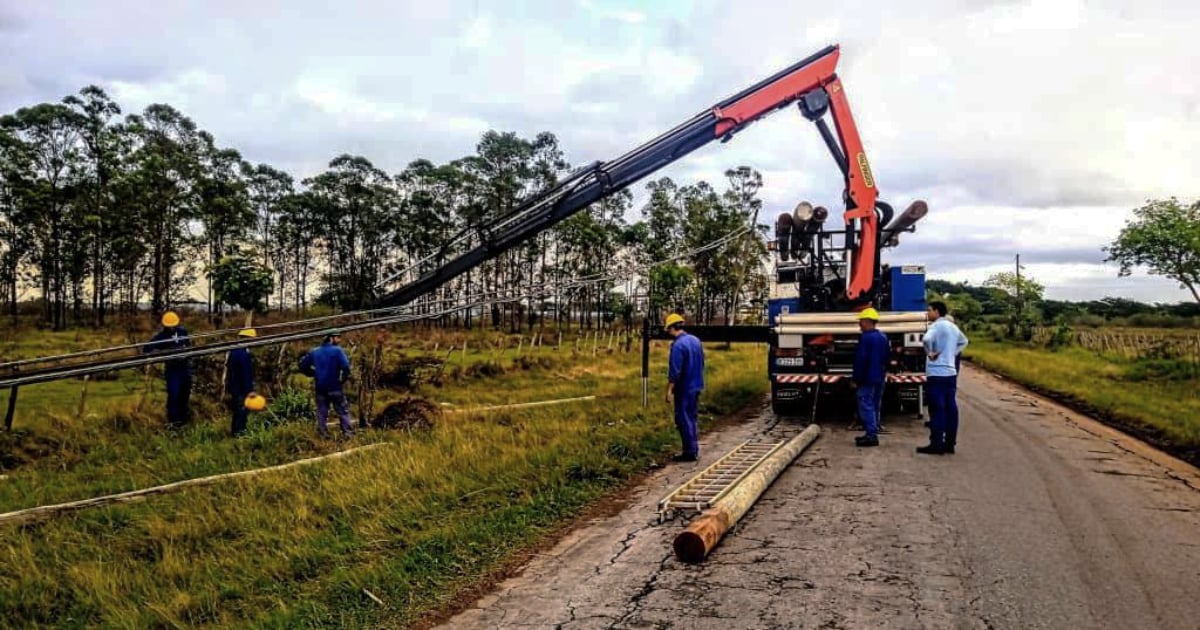Severe weather conditions led to the collapse of nine telephone poles on Wednesday afternoon near the Laguna Las Piedras area, along the road between Colón and Calimete in Matanzas Province. According to the specialized page Vigilancia Tropical, the event was identified as a downburst with straight-line winds ranging from 70 to 80 km/h, accompanied by a rainfall accumulation of 102.3 mm in under two hours. This categorizes the event as a Severe Local Storm (SLS) and includes heavy rainfalls, as confirmed by the Colón meteorological station.
Initially, local media and social media users mistook the phenomenon for a tornado, referencing the typical Cuban countryside "rabo de nube." However, experts clarified that there was no evidence of a funnel cloud or rotation typically associated with tornadoes, thus dismissing that theory.
A local resident mentioned that such atmospheric phenomena are becoming more common in the region during this time of year. The colleague Henry Delgado Manzor explained that while the phenomenon is colloquially known as "rabo de nube" by farmers and rural inhabitants, modern meteorology defines it as an "elevated waterspout" when it doesn't touch the ground. If it hits the terrestrial surface, it is classified as a tornado on land or a waterspout at sea, as detailed by the official Periódico Girón on Facebook.
The damaged infrastructure belongs to the state-owned telecommunications company ETECSA. Crews from Colón worked tirelessly throughout the day to restore service, assuring that despite structural damages, communications remained uninterrupted in the area.
This incident occurs amidst a backdrop of widespread service outages in voice and data reported by ETECSA across the country. While there's no formal link between this event and the pole collapse in Colón, the timing has fueled social media speculation.
In recent years, central regions like Matanzas have seen an increase in severe convective phenomena, such as tornadoes and waterspouts, similar to those reported in June 2024.
Understanding Matanzas' Severe Weather Events
What caused the telephone poles to collapse in Matanzas?
The collapse was caused by a downburst with straight-line winds between 70 and 80 km/h, resulting in a Severe Local Storm with heavy rainfall.
Why was the phenomenon initially mistaken for a tornado?
Local media and social media users misidentified the event as a tornado due to the presence of a "rabo de nube," a common term in rural Cuba for such phenomena. Experts later clarified the absence of tornado characteristics.
Has Matanzas experienced similar weather events before?
Yes, central regions like Matanzas have reported an increase in severe convective weather events, including tornadoes and waterspouts, in recent years.
